Grow Romaine Lettuce at Home and enjoy fresh, crisp salads right from your backyard! Imagine stepping outside and harvesting the perfect leaves for your lunch, knowing exactly where they came from and what went into growing them. Forget those wilted, overpriced heads at the grocery store – with a few simple tricks, you can cultivate your own thriving romaine patch.
Lettuce, including romaine, has a rich history, dating back to ancient Egypt where it was initially cultivated for its seeds and oil. Over time, the leafy varieties we enjoy today were developed, becoming a staple in cuisines worldwide. Growing your own romaine connects you to this long tradition, allowing you to participate in a practice that has nourished people for centuries.
But why should you learn to grow Romaine Lettuce at Home? In today’s world, knowing where your food comes from is more important than ever. Home gardening empowers you to control the quality of your produce, ensuring it’s free from harmful pesticides and packed with nutrients. Plus, it’s incredibly rewarding to nurture a plant from seed to harvest. I’m excited to share some easy DIY tricks and hacks that will have you enjoying delicious, homegrown romaine in no time!
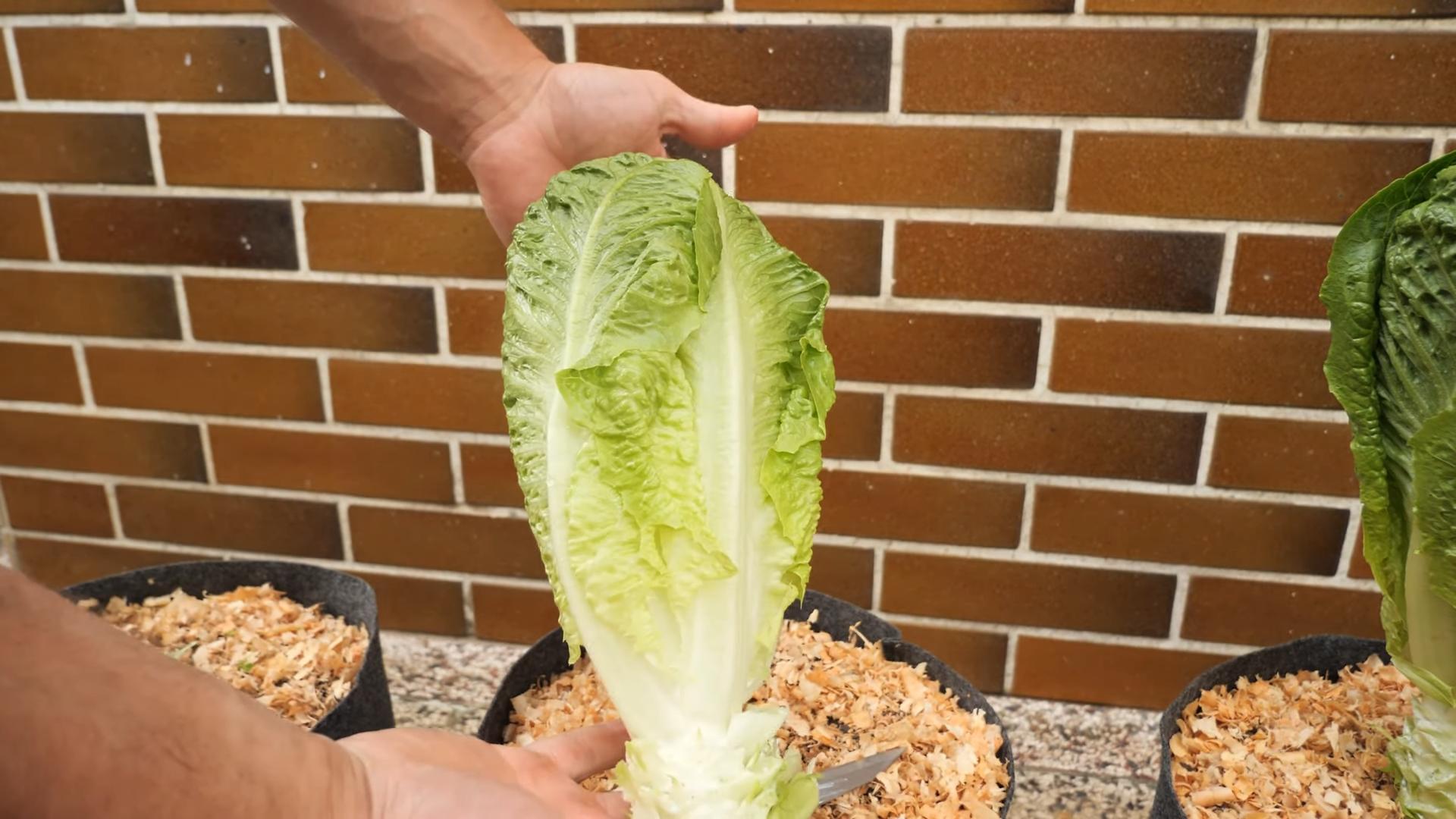
Growing Romaine Lettuce at Home: A Beginner’s Guide
Hey there, fellow gardening enthusiasts! Ever dreamt of having fresh, crisp romaine lettuce right at your fingertips? Well, dream no more! Growing your own romaine lettuce at home is surprisingly easy and incredibly rewarding. I’m going to walk you through everything you need to know, from seed to salad. Let’s get our hands dirty!
Choosing Your Romaine Variety
First things first, let’s talk romaine varieties. There are a bunch to choose from, each with its own unique characteristics. Here are a few popular options:
* ‘Paris Island Cos’: This is a classic, reliable variety known for its tall, upright heads and excellent flavor. It’s a great all-around choice.
* ‘Little Gem’: As the name suggests, this is a smaller variety, perfect for smaller gardens or containers. It’s sweet and tender.
* ‘Rouge d’Hiver’: If you’re looking for something a little different, this red-tinged romaine adds a pop of color to your garden and salads.
* ‘Valmaine’: This variety is known for its heat tolerance, making it a good choice for warmer climates.
I personally love ‘Paris Island Cos’ because it’s so dependable, but feel free to experiment and find your favorite!
Getting Started: Seeds vs. Seedlings
You have two main options for starting your romaine lettuce: seeds or seedlings.
* Seeds: Starting from seed gives you more control over the entire process and is generally more economical. However, it requires a bit more patience and attention.
* Seedlings: Buying seedlings from a nursery is a quicker and easier option, especially if you’re short on time or space. Just make sure to choose healthy-looking seedlings with vibrant green leaves.
I usually start from seed because I enjoy the process, but either way works just fine!
Starting Romaine Lettuce from Seed
If you’re going the seed route, here’s how to do it:
1. Timing is Key: Romaine lettuce prefers cool weather, so the best time to start seeds is in early spring or late summer. This avoids the hottest parts of the summer, which can cause lettuce to bolt (go to seed prematurely). I usually start my seeds indoors about 4-6 weeks before the last expected frost in spring, or directly sow them outdoors in late summer.
2. Prepare Your Seed Starting Mix: Use a seed starting mix that’s light and well-draining. You can buy a pre-made mix or make your own by combining equal parts peat moss, vermiculite, and perlite.
3. Sow the Seeds: Fill your seed starting trays or pots with the mix and gently press the seeds into the surface, about 1/4 inch deep. You can sow a few seeds per cell or pot and thin them out later if needed.
4. Water Gently: Water the seeds gently using a spray bottle or watering can with a fine rose to avoid disturbing them. Keep the soil consistently moist but not soggy.
5. Provide Light: Place the seed trays or pots in a bright location, such as a sunny windowsill or under grow lights. If using grow lights, keep them about 2-4 inches above the seedlings.
6. Maintain Temperature: Romaine lettuce seeds germinate best at temperatures between 60-70°F (15-21°C). You can use a heat mat to help maintain a consistent temperature.
7. Thin the Seedlings: Once the seedlings have developed a few true leaves (the second set of leaves), thin them out to one seedling per cell or pot. Snip off the weaker seedlings at the soil line with scissors.
8. Harden Off the Seedlings: Before transplanting the seedlings outdoors, you need to harden them off. This means gradually exposing them to outdoor conditions over a period of about a week. Start by placing them in a sheltered location for a few hours each day, gradually increasing the amount of time they spend outdoors.
Transplanting Romaine Lettuce Seedlings
Once your seedlings are hardened off, it’s time to transplant them into your garden or containers.
1. Choose a Location: Romaine lettuce prefers a sunny location with well-drained soil. It can tolerate some partial shade, especially in hotter climates.
2. Prepare the Soil: Amend the soil with compost or other organic matter to improve its fertility and drainage.
3. Space the Seedlings: Space the seedlings about 6-12 inches apart, depending on the variety. Taller varieties will need more space.
4. Plant Carefully: Dig a hole that’s slightly larger than the root ball of the seedling. Gently remove the seedling from its container and place it in the hole. Backfill with soil and gently firm it around the base of the plant.
5. Water Thoroughly: Water the seedlings thoroughly after transplanting.
Growing Romaine Lettuce in Containers
If you don’t have a garden, you can easily grow romaine lettuce in containers.
1. Choose a Container: Select a container that’s at least 6 inches deep and wide. Make sure it has drainage holes.
2. Use a Good Quality Potting Mix: Use a potting mix that’s specifically designed for containers.
3. Plant the Seedlings: Follow the same planting instructions as for transplanting into the garden. You can plant several seedlings in a larger container, spacing them about 4-6 inches apart.
4. Water Regularly: Container-grown lettuce will need to be watered more frequently than lettuce grown in the garden, especially during hot weather. Check the soil moisture regularly and water when the top inch feels dry.
5. Fertilize: Fertilize the lettuce every few weeks with a balanced liquid fertilizer.
Caring for Your Romaine Lettuce
Once your romaine lettuce is planted, here’s how to keep it happy and healthy:
1. Watering: Water regularly, especially during dry periods. Lettuce needs consistent moisture to thrive. Aim for about an inch of water per week.
2. Weeding: Keep the area around your lettuce free of weeds. Weeds compete with lettuce for nutrients and water.
3. Fertilizing: Fertilize every few weeks with a balanced liquid fertilizer.
4. Pest Control: Keep an eye out for pests such as aphids, slugs, and snails. You can control aphids with insecticidal soap or neem oil. Slugs and snails can be handpicked or trapped.
5. Bolting Prevention: As I mentioned earlier, bolting is when lettuce goes to seed prematurely. This can happen when the weather gets too hot. To prevent bolting, provide shade during the hottest part of the day, water regularly, and harvest your lettuce before it gets too mature.
Harvesting Your Romaine Lettuce
The moment we’ve all been waiting for! Harvesting your homegrown romaine lettuce.
1. When to Harvest: You can start harvesting romaine lettuce when the heads are about 6-8 inches tall.
2. How to Harvest: You can harvest the entire head by cutting it off at the base with a sharp knife. Alternatively, you can harvest individual leaves as needed, starting with the outer leaves. This is called “cut-and-come-again” harvesting.
3. Storing Your Harvest: Store your harvested romaine lettuce in the refrigerator in a plastic bag or container. It will keep for about a week.
Troubleshooting Common Problems
Even with the best care, you might encounter some problems while growing romaine lettuce. Here are a few common issues and how to deal with them:
* Bolting: As mentioned earlier, bolting is caused by hot weather. Prevent it by providing shade and watering regularly.
* Aphids: These tiny pests can suck the sap from lettuce leaves. Control them with insecticidal soap or neem oil.
* Slugs and Snails: These pests can chew holes in lettuce leaves. Handpick them or trap them with beer traps.
* Downy Mildew: This fungal disease can cause yellow spots on lettuce leaves. Prevent it by providing good air circulation and avoiding overhead watering.
Enjoying Your Homegrown Romaine Lettuce
Now that you’ve successfully grown your own romaine lettuce, it’s time to enjoy the fruits (or rather, vegetables) of your labor! Use it in salads, sandwiches, wraps, or any other dish that calls for fresh, crisp lettuce. There’s nothing quite like the taste of homegrown produce!
I hope this guide has been helpful. Happy gardening!
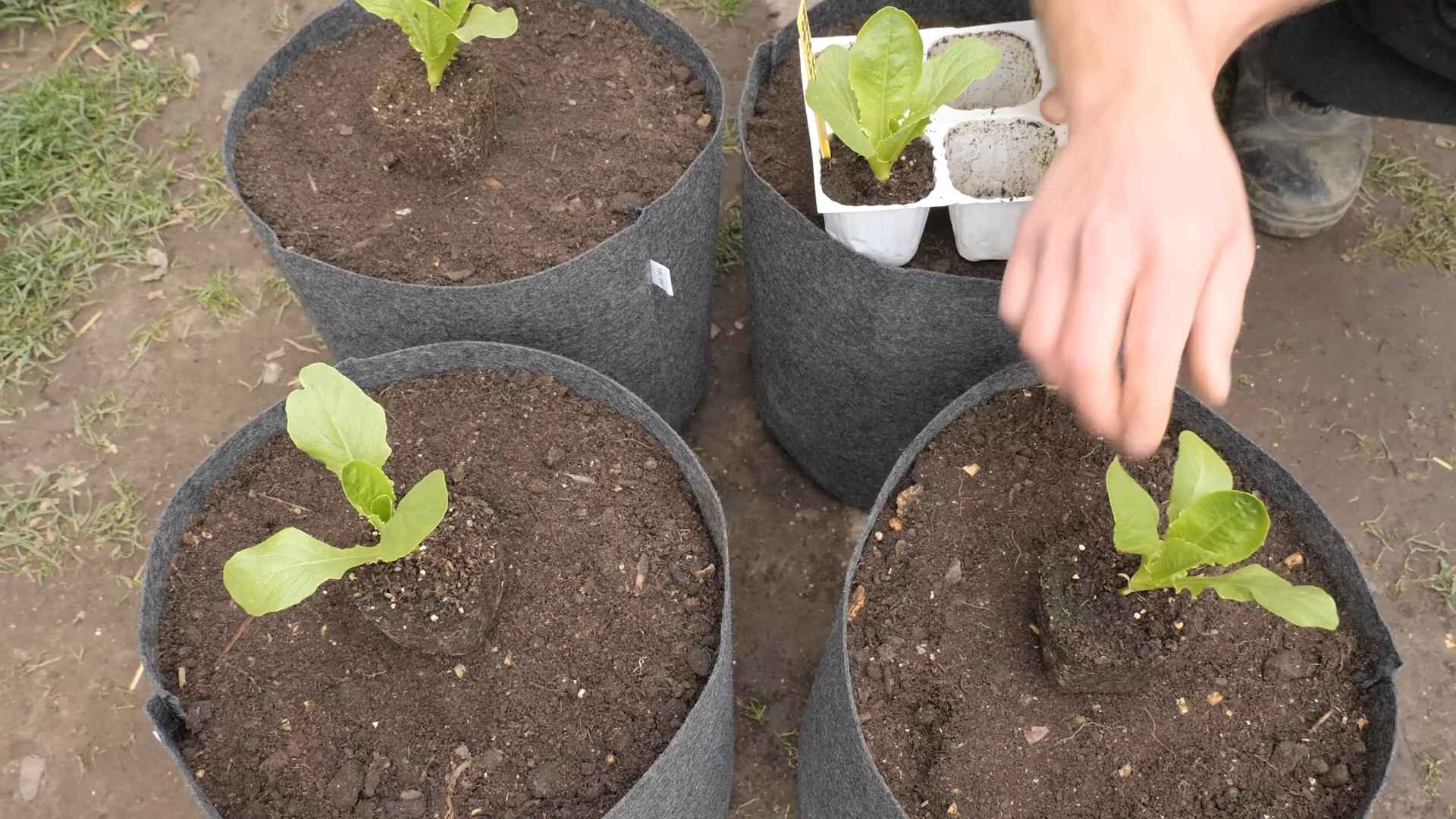
Conclusion
So, there you have it! Growing your own Romaine lettuce at home is not only achievable, but it’s also incredibly rewarding. Forget those limp, overpriced heads of lettuce at the grocery store. Imagine crisp, vibrant Romaine, bursting with flavor, just steps from your kitchen. This DIY project is a game-changer for anyone who values fresh, healthy ingredients and enjoys a touch of green in their lives.
Why is this a must-try? Because it puts you in control. You control the quality, ensuring your lettuce is free from harmful pesticides and herbicides. You control the freshness, harvesting only what you need, when you need it. And you control the cost, saving money in the long run while enjoying a superior product. Plus, let’s be honest, there’s a certain satisfaction that comes from nurturing something from seed (or even a leftover stem!) to a delicious salad.
But the beauty of growing Romaine lettuce at home lies in its adaptability. Feel free to experiment! Try different varieties of Romaine, from the classic green to the vibrant red. Consider growing your lettuce in containers on a sunny balcony, in a raised garden bed, or even indoors with the help of grow lights. You can also explore companion planting, pairing your Romaine with herbs like basil or chives to deter pests and enhance flavor. If you find that your lettuce is bolting (going to seed), don’t despair! You can still harvest the leaves for a slightly more bitter, but still edible, addition to your salads. Alternatively, let it bolt and collect the seeds for future plantings, ensuring a continuous supply of fresh Romaine.
Don’t be intimidated if you’re a beginner gardener. Growing Romaine lettuce is surprisingly forgiving. With a little attention to sunlight, water, and soil, you’ll be enjoying homegrown salads in no time. This is a perfect project for families, teaching children about where their food comes from and fostering a love for gardening.
We wholeheartedly encourage you to give this DIY trick a try. It’s a simple, sustainable, and satisfying way to elevate your meals and connect with nature. Once you’ve experienced the joy of harvesting your own Romaine lettuce, you’ll never look at store-bought lettuce the same way again.
And most importantly, we want to hear about your experience! Share your tips, tricks, and triumphs in the comments below. Did you try a particular variety of Romaine? Did you encounter any challenges? What are your favorite ways to use your homegrown lettuce? Your feedback will not only help other readers but also inspire us to continue sharing valuable gardening tips and tricks. Let’s create a community of home gardeners, all enjoying the delicious rewards of growing our own Romaine lettuce! So get your hands dirty, plant those seeds (or stems!), and get ready to enjoy the freshest, most flavorful Romaine lettuce you’ve ever tasted. Happy gardening!
Frequently Asked Questions (FAQ)
What is the best time of year to grow Romaine lettuce?
Romaine lettuce thrives in cooler temperatures, making spring and fall the ideal times to plant. In warmer climates, you can grow it during the winter months. Avoid planting during the hottest part of summer, as high temperatures can cause the lettuce to bolt (go to seed) and become bitter. If you live in a region with hot summers, consider planting in a shaded area or using shade cloth to protect your lettuce from the intense sun. You can also start seeds indoors a few weeks before the last expected frost in spring or a few weeks before the first expected frost in fall. This will give your plants a head start and allow you to harvest sooner.
How much sunlight does Romaine lettuce need?
Romaine lettuce needs at least six hours of sunlight per day to thrive. However, in warmer climates, it can benefit from some afternoon shade to prevent bolting. If you’re growing your lettuce indoors, use grow lights to provide adequate light. Position the lights about 6-12 inches above the plants and keep them on for 12-14 hours per day. Rotate the plants regularly to ensure even light exposure.
What kind of soil is best for growing Romaine lettuce?
Romaine lettuce prefers well-drained, fertile soil with a pH between 6.0 and 7.0. Amend your soil with compost or other organic matter to improve drainage and fertility. If you’re growing in containers, use a high-quality potting mix. Avoid using garden soil in containers, as it can become compacted and prevent proper drainage. Consider adding perlite or vermiculite to your potting mix to further improve drainage.
How often should I water Romaine lettuce?
Romaine lettuce needs consistent moisture to thrive. Water deeply whenever the top inch of soil feels dry to the touch. Avoid overwatering, as this can lead to root rot. Water in the morning to allow the leaves to dry before nightfall, which can help prevent fungal diseases. Use a soaker hose or drip irrigation to water at the base of the plants, avoiding wetting the leaves.
How do I prevent pests and diseases from affecting my Romaine lettuce?
Several pests and diseases can affect Romaine lettuce, including aphids, slugs, snails, and fungal diseases. To prevent pests, inspect your plants regularly and remove any pests you find by hand. You can also use insecticidal soap or neem oil to control pests. To prevent diseases, ensure good air circulation around your plants and avoid overwatering. Remove any diseased leaves promptly. Consider using organic fungicides if necessary. Companion planting with herbs like basil or chives can also help deter pests.
How do I harvest Romaine lettuce?
You can harvest Romaine lettuce when the heads are about 6-8 inches tall. You can either harvest the entire head at once or harvest individual leaves as needed. To harvest the entire head, cut it off at the base with a sharp knife. To harvest individual leaves, start with the outer leaves and work your way inward. Avoid harvesting more than one-third of the leaves at a time, as this can stress the plant. Harvest in the morning when the leaves are crisp and cool.
How do I store Romaine lettuce after harvesting?
After harvesting, wash the lettuce thoroughly and dry it with a salad spinner or paper towels. Store the lettuce in a plastic bag or container in the refrigerator. It will keep for about a week. To keep the lettuce crisp, you can place a paper towel in the bag or container to absorb excess moisture. Avoid storing lettuce near fruits like apples or bananas, as they release ethylene gas, which can cause the lettuce to brown.
Can I grow Romaine lettuce from a leftover stem?
Yes, you can regrow Romaine lettuce from a leftover stem! Place the stem in a shallow dish of water, making sure the cut end is submerged. Place the dish in a sunny location and change the water every day. After a few days, you should see new roots sprouting from the stem. Once the roots are about an inch long, you can transplant the stem into a pot of soil. Keep the soil moist and provide plenty of sunlight. While the regrown lettuce may not be as large or robust as lettuce grown from seed, it’s a fun and easy way to get a second harvest from your Romaine.
What are some variations I can try when growing Romaine lettuce?
Experiment with different varieties of Romaine lettuce, such as ‘Little Gem,’ ‘Paris Island Cos,’ or ‘Red Romaine.’ Try growing your lettuce in different containers or locations to see what works best for you. Consider using different types of soil or fertilizer to see how they affect the growth of your lettuce. You can also try companion planting with different herbs or vegetables to see if they improve the flavor or health of your lettuce. Don’t be afraid to experiment and have fun!
My Romaine lettuce is bolting. What should I do?
Bolting is when lettuce sends up a flower stalk and the leaves become bitter. This is usually caused by hot weather or stress. Once lettuce bolts, it’s generally not as palatable. However, you can still harvest the leaves for a slightly more bitter addition to salads. Alternatively, you can let the plant bolt and collect the seeds for future plantings. To prevent bolting, plant your lettuce in a shaded area or use shade cloth during hot weather. Ensure your lettuce is adequately watered and fertilized to prevent stress. Choose bolt-resistant varieties of Romaine lettuce.

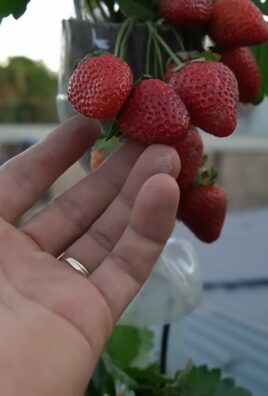
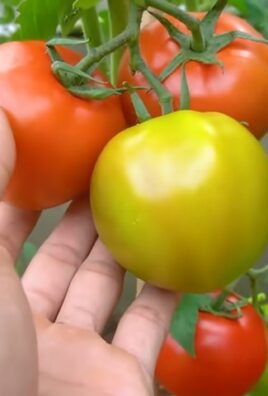
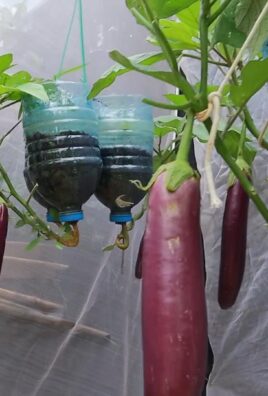
Leave a Comment